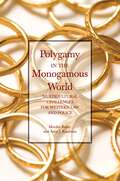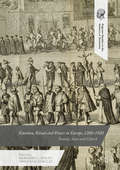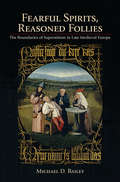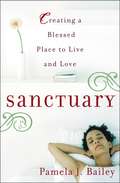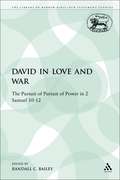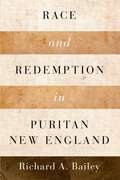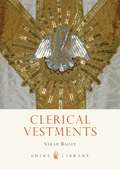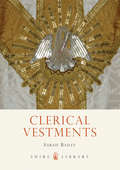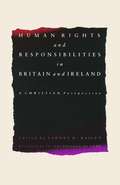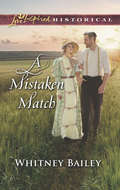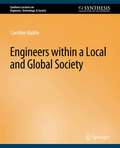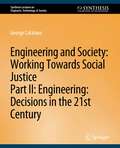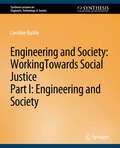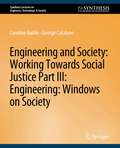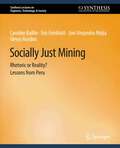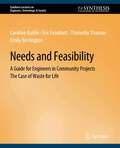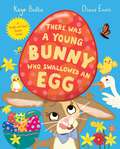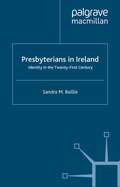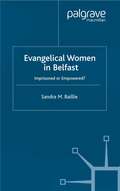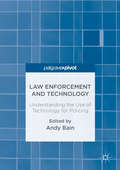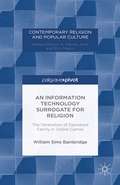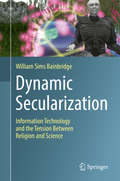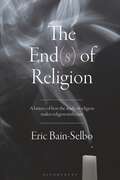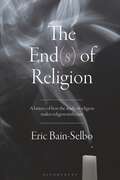- Table View
- List View
Polygamy in the Monogamous World: Multicultural Challenges for Western Law and Policy
by Martha Bailey Amy J. KaufmanThis fact-filled book on polygamy and plural unions around the world supports an in-depth consideration of policy options for Western countries.Polygamy and plural marriage have become front-and-center issues in Europe, Canada, and the United States, notably on two religious fronts: among some splinter groups of the Church of Jesus Christ of Latter-Day Saints and in Islam. Polygamy in the Monogamous World: Multicultural Challenges for Western Law and Policy takes both groups into account as it provides a careful examination of legal polygamy in non-Western countries and plural unions in North America. Comparing these similar, but legally distinct forms of union, it offers a fresh perspective on how Western countries should respond to these relationships. Specifically, the book surveys non-Western countries where polygamy is legally practiced, then provides an overview of plural unions in North America. The problems of polygamy and plural unions are examined, including the potential for tne abuse of wives. The responses of Western governments to such relationships are reviewed, and the most effective solutions are identified to ascertain what policies should be adopted going forward.
Emotion, Ritual and Power in Europe, 1200–1920: Family, State and Church (Palgrave Studies in the History of Emotions)
by Merridee L. Bailey Katie BarclayThis volume spans the fourteenth to nineteenth centuries, across Europe and its empires, and brings together historians, art historians, literary scholars and anthropologists to rethink medieval and early modern ritual. The study of rituals, when it is alert to the emotions which are woven into and through ritual activities, presents an opportunity to explore profoundly important questions about people’s relationships with others, their relationships with the divine, with power dynamics and importantly, with their concept of their own identity. Each chapter in this volume showcases the different approaches, theories and methodologies that can be used to explore emotions in historical rituals, but they all share the goal of answering the question of how emotions act within ritual to inform balances of power in its many and varied forms. Chapter 5 of this book is available open access under a CC BY 4.0 license.
Fearful Spirits, Reasoned Follies: The Boundaries of Superstition in Late Medieval Europe
by Michael D. BaileySuperstitions are commonplace in the modern world. Mostly, however, they evoke innocuous images of people reading their horoscopes or avoiding black cats. Certain religious practices might also come to mind—praying to St. Christopher or lighting candles for the dead. Benign as they might seem today, such practices were not always perceived that way. In medieval Europe superstitions were considered serious offenses, violations of essential precepts of Christian doctrine or immutable natural laws. But how and why did this come to be? In Fearful Spirits, Reasoned Follies, Michael D. Bailey explores the thorny concept of superstition as it was understood and debated in the Middle Ages. Bailey begins by tracing Christian thinking about superstition from the patristic period through the early and high Middle Ages. He then turns to the later Middle Ages, a period that witnessed an outpouring of writings devoted to superstition—tracts and treatises with titles such as De superstitionibus and Contra vitia superstitionum. Most were written by theologians and other academics based in Europe’s universities and courts, men who were increasingly anxious about the proliferation of suspect beliefs and practices, from elite ritual magic to common healing charms, from astrological divination to the observance of signs and omens. As Bailey shows, however, authorities were far more sophisticated in their reasoning than one might suspect, using accusations of superstition in a calculated way to control the boundaries of legitimate religion and acceptable science. This in turn would lay the conceptual groundwork for future discussions of religion, science, and magic in the early modern world. Indeed, by revealing the extent to which early modern thinkers took up old questions about the operation of natural properties and forces using the vocabulary of science rather than of belief, Bailey exposes the powerful but in many ways false dichotomy between the "superstitious" Middle Ages and "rational" European modernity.
Sanctuary: Creating A Blessed Place To Live And Love
by Pamela J. BaileyRealising the preciousness of life and family, a hunger has emerged for beautiful, nurturing and spiritual home environments. This creative text inspires readers to create beautiful spaces by concentrating on how to live in them as opposed to what you put in them.
David in Love and War: The Pursuit of Pursuit of Power in 2 Samuel 10-12 (The Library of Hebrew Bible/Old Testament Studies)
by Randall C. BaileyDavid in Love and War is a reworking of the dissertation that Bailey worked on while at Emory College in Atlanta, Georgia. His interests in literary critical concerns directed him in regards to the information he wanted to cover in his book. Bailey covers 2 Samuel 10 –12 as well as the connection between David and Bathsheba.
Race and Redemption in Puritan New England (Religion in America)
by Richard A. BaileyAs colonists made their way to New England in the early seventeenth century, they hoped their efforts would stand as a "citty upon a hill." Living the godly life preached by John Winthrop would have proved difficult even had these puritans inhabited the colonies alone, but this was not the case: this new landscape included colonists from Europe, indigenous Americans, and enslaved Africans. In Race and Redemption in Puritan New England, Richard A. Bailey investigates the ways that colonial New Englanders used, constructed, and re-constructed their puritanism to make sense of their new realities. As they did so, they created more than a tenuous existence together. They also constructed race out of the spiritual freedom of puritanism.
Race and Redemption in Puritan New England (Religion in America)
by Richard A. BaileyAs colonists made their way to New England in the early seventeenth century, they hoped their efforts would stand as a "citty upon a hill." Living the godly life preached by John Winthrop would have proved difficult even had these puritans inhabited the colonies alone, but this was not the case: this new landscape included colonists from Europe, indigenous Americans, and enslaved Africans. In Race and Redemption in Puritan New England, Richard A. Bailey investigates the ways that colonial New Englanders used, constructed, and re-constructed their puritanism to make sense of their new realities. As they did so, they created more than a tenuous existence together. They also constructed race out of the spiritual freedom of puritanism.
Clerical Vestments: Ceremonial Dress of the Church (Shire Library)
by Sarah BaileyThe churches of Britain contain a remarkable heritage of exquisitely embroidered vestments, and cathedrals in particular hold some of the most beautiful textiles ever produced in Europe. The history of these priestly garments and how their use developed in Britain and Europe is fascinating. This book outlines the tradition and mysticism associated with them and the role they still play in the 'theatre' of church, and shows how colour and ornament are used in the symbolism of the Christian faith. It explores the history of vestment production up to the present day, covering the practicalities of design, the sourcing of fabrics and the embroiderers themselves.
Clerical Vestments: Ceremonial Dress of the Church (Shire Library #727)
by Sarah BaileyThe churches of Britain contain a remarkable heritage of exquisitely embroidered vestments, and cathedrals in particular hold some of the most beautiful textiles ever produced in Europe. The history of these priestly garments and how their use developed in Britain and Europe is fascinating. This book outlines the tradition and mysticism associated with them and the role they still play in the 'theatre' of church, and shows how colour and ornament are used in the symbolism of the Christian faith. It explores the history of vestment production up to the present day, covering the practicalities of design, the sourcing of fabrics and the embroiderers themselves.
Human Rights and Responsibilities in Britain and Ireland: A Christian Perspective
by Sydney D. BaileyA Mistaken Match: Montana Bride By Christmas Cowboy Lawman's Christmas Reunion Mistletoe Mommy A Mistaken Match (Mills And Boon Love Inspired Historical Ser.)
by Whitney BaileyMATRIMONY MIX-UP
Engineers within a Local and Global Society (Synthesis Lectures on Engineers, Technology, & Society)
by Caroline BaillieEngineers, Technology and Society presents topics intended to aid the practicing engineer in reflecting upon the nature and purpose of their own practice within the engineering profession and how that is related to and implicated in social, economic and political issues. The series will include external relations between engineering, economic systems and social and political practices, as well as power structures and working conditions within the organisation. In an increasingly competitive and hostile environment in which practicing engineers are forced to spend their lives fighting for higher profit margins, many engineers become despondent and often leave the profession just a few years after graduation. They do not feel they are engineering for those in need in the world but for a small minority who can pay. There are an increasing number of engineers in the workplace who feel dissatisfied with these issues but do not know where to begin to address them. It is hoped that these books will start a conversation in many parts of the world where diverse engineers are working. This introductory book of the series presents an overview of the key issues at stake. I consider how, as engineers, we might decide what is the right thing to do by exploring rights and notions of freedom and what these might mean in a world where we are, according to some, ‘training for compliance’. I consider engineering in the past and how it has been used to contribute to social contexts in the Western world as well as in developing countries. I look at our responsibility as engineers to learn from the past to enhance our understanding and take appropriate action related to contemporary industrial development and globalization. Finally, I present a case study of my own engineering for others to critique. Practicing what you preach is never easy and living as a just engineer presents many challenges. As Ursula Franklin states clearly in her Massey lectures which I discuss in chapter 1, engineers have choices; it is up to us to ensure that we are aware of the way in which our engineering practice contributes to global social, economic and political issues so that we are able to make response – able choices.
Engineering and Society: Decisions in the 21st Century (Synthesis Lectures on Engineers, Technology, & Society)
by Caroline Baillie George CatalanoPart II: Engineering Decisions in the 21st Century Engineers work in an increasingly complex entanglement of ideas, people, cultures, technology, systems and environments. Today, decisions made by engineers often have serious implications for not only their clients but for society as a whole and the natural world. Such decisions may potentially influence cultures, ways of living, as well as alter ecosystems which are in delicate balance. In order to make appropriate decisions and to co-create ideas and innovations within and among the complex networks of communities which currently exist and are shaped by our decisions, we need to regain our place as professionals, to realise the significance of our work and to take responsibility in a much deeper sense. Engineers must develop the 'ability to respond' to emerging needs of all people, across all cultures. To do this requires insights and knowledge which are at present largely within the domain of the social and political sciences but which need to be shared with our students in ways which are meaningful and relevant to engineering. This book attempts to do just that. In Part 1 Baillie introduces ideas associated with the ways in which engineers relate to the communities in which they work. Drawing on scholarship from science and technology studies, globalisation and development studies, as well as work in science communication and dialogue, this introductory text sets the scene for an engineering community which engages with the public. In Part 2 Catalano frames the thinking processes necessary to create ethical and just decisions in engineering, to understand the implications of our current decision making processes and think about ways in which we might adapt these to become more socially just in the future. In Part 3 Baillie and Catalano have provided case studies of everyday issues such as water, garbage and alarm clocks, to help us consider how we might see through the lenses of our new knowledge from Parts 1 and 2 and apply this to our everyday existence as engineers. Table of Contents: Making Decisions in the 21st Century / Ethics / Landmines and the War in Iraq / Hurricane Katrina and the Flooding of New Orleans / Disappearing Bumble Bees / Engineering and Traditional Approaches / Engineering and Freedom / Engineering and Chaos / Engineering and a Morally Deep World / Engineering and Globalism / Engineering and Love / Case Study Application / Final Thoughts
Engineering and Society: Engineering and Society (Synthesis Lectures on Engineers, Technology, & Society)
by Caroline Baillie George CatalanoEngineers work in an increasingly complex entanglement of ideas, people, cultures, technology, systems and environments. Today, decisions made by engineers often have serious implications for not only their clients but for society as a whole and the natural world. Such decisions may potentially influence cultures, ways of living, as well as alter ecosystems which are in delicate balance. In order to make appropriate decisions and to co-create ideas and innovations within and among the complex networks of communities which currently exist and are shaped by our decisions, we need to regain our place as professionals, to realise the significance of our work and to take responsibility in a much deeper sense. Engineers must develop the 'ability to respond' to emerging needs of all people, across all cultures. To do this requires insights and knowledge which are at present largely within the domain of the social and political sciences but which need to be shared with our students in ways which are meaningful and relevant to engineering. This book attempts to do just that. In Part 1 Baillie introduces ideas associated with the ways in which engineers relate to the communities in which they work. Drawing on scholarship from science and technology studies, globalisation and development studies, as well as work in science communication and dialogue, this introductory text sets the scene for an engineering community which engages with the public. In Part 2 Catalano frames the thinking processes necessary to create ethical and just decisions in engineering, to understand the implications of our current decision making processes and think about ways in which we might adapt these to become more socially just in the future. In Part 3 Baillie and Catalano have provided case studies of everyday issues such as water, garbage and alarm clocks, to help us consider how we might see through the lenses of our new knowledge from Parts 1 and 2 and apply this to our every day existence as engineers. Table of Contents: Introduction / Engineering and Society / Engineering and the Public / Globalisation, Development, and Technology
Engineering and Society: Windows on Society (Synthesis Lectures on Engineers, Technology, & Society)
by Caroline Baillie George CatalanoEngineers work in an increasingly complex entanglement of ideas, people, cultures, technology, systems and environments. Today, decisions made by engineers often have serious implications for not only their clients but for society as a whole and the natural world. Such decisions may potentially influence cultures, ways of living, as well as alter ecosystems which are in delicate balance. In order to make appropriate decisions and to co-create ideas and innovations within and among the complex networks of communities which currently exist and are shaped by our decisions, we need to regain our place as professionals, to realise the significance of our work and to take responsibility in a much deeper sense. Engineers must develop the 'ability to respond' to emerging needs of all people, across all cultures. To do this requires insights and knowledge which are at present largely within the domain of the social and political sciences but which need to be shared with our students in ways which are meaningful and relevant to engineering. This book attempts to do just that. In Part 1 Baillie introduces ideas associated with the ways in which engineers relate to the communities in which they work. Drawing on scholarship from science and technology studies, globalisation and development studies, as well as work in science communication and dialogue, this introductory text sets the scene for an engineering community which engages with the public. In Part 2 Catalano frames the thinking processes necessary to create ethical and just decisions in engineering, to understand the implications of our current decision making processes and think about ways in which we might adapt these to become more socially just in the future. In Part 3 Baillie and Catalano have provided case studies of everyday issues such as water, garbage and alarm clocks, to help us consider how we might see through the lenses of our new knowledge from Parts 1 and 2 and apply this to our everyday existence as engineers. Table of Contents: Introduction / Throwing Away Rubbish / Turning on the Tap / Awakened by an Alarm Clock / Driving the SUV / Travelling to Waikiki Beach
Socially Just Mining: Rethoric or Reality? Lessons from Peru (Synthesis Lectures on Engineers, Technology, & Society)
by Caroline Baillie Eric Feinblatt Joel Alejandro Glevys Rondon Jordan Aitken Rita ArmstrongIn this book we consider ways in which mining companies do and can/should respect the human rights of communities affected by mining operations. We examine what "can and should" means and to whom, in a variety of mostly Peruvian contexts, and how engineers engage in "normative" practices that may interfere with the communities' best interests. We hope to raise awareness of the complexity of issues at stake and begin the necessary process of critique—of self and of the industry in which an engineer chooses to work. This book aims to alert engineering students to the price paid not only by vulnerable communities but also by the natural environment when mining companies engage in irresponsible and, often, illegal mining practices. If mining is to be in our future, and if we are to have a future which is sustainable, engineering students must learn to mine and support mining, in new ways—ways which are fairer, more equitable, and cleaner than today.
Needs and Feasibility: A Guide for Engineers in Community Projects (Synthesis Lectures on Engineers, Technology, & Society)
by Caroline Baillie Eric Feinblatt Thimothy Thamae Emily BerringtonNeeds and Feasibility: A Guide for Engineers in Community Projects -- The Case of Waste for Life is the story of Waste for Life (WFL). WFL is a not-for-profit organization that works to promote poverty-reducing solutions to environmental problems, and its educational branch is an international consortium of universities in six countries, involving students in support of community development projects. WFL currently works in Lesotho and Argentina. We present the story of the development of WFL in each country as a case-based guide to engineers, professors and students interested in community development work, particularly in contexts very different from their own. We focus mainly on the set-up stages, framing the projects to ensure that community needs are adequately articulated and acted upon. We begin with needs assessment, what is it that needs to be done -- for whom and why? How feasible is this, technically, economically, and can we guarantee sustainability? Before we can decide any of this, we need to understand and map the territory -- who are the key players, who have the most influence, and who will be most impacted by what we are doing? What is the role of the local government? If the groups are working as cooperatives, what does this mean, and what are these groups looking for? What is the technical solution going to look like? If it is a product, how will it be marketed? What other social, environmental, and economic impacts will it have and on whom? Once these have all been negotiated, and it is clear that all parties are working towards a mutually acceptable goal, how do we move forward so that any dependence on external partners is removed? When do we bring students into the work? What role can they play? Should they stay at home and support the project from there or is it better to do work in the field? This guide will be useful for the student engineer or the experienced engineer or professor who is interested in moving towards socially just engineering development work but has no idea where to begin. The real difficulties and on the ground issues encountered by the Waste for Life team are presented honestly and with the knowledge that we must learn from our mistakes. Only then can we hope to gain a better understanding of our potential role in supporting community development and move towards a better future. Table of Contents: An Introduction / Assessing the Need in Lesotho / Feasibility of WFL Lesotho / Mapping the Territory in Buenos Aires / Stakeholder Focus: The Local Government / Stakeholder Focus: Cooperatives / Sustainability: Economic, Environmental, and Social / Student Involvement / Summary Thoughts
There Was a Young Bunny Who Swallowed an Egg: A laugh out loud Easter treat!
by Kaye BaillieA laugh-out-loud Easter eggstravaganza, There Was a Young Bunny who Swallowed an Egg from Kaye Baillie and award-winning illustrator Diane Ewen is the perfect springtime story for little ones!Everyone's heard about the old lady who swallowed a fly, but now it’s time to meet a little bunny who, just as the Easter Egg Hunt is starting, swallows . . . an egg! And she doesn't stop there! Soon she's gobbled down a chick, a hot-cross bun, and a basket! What will she gobble down next?A funny, cumulative rhyming story young children will love, packed with Easter chicks, eggs, buns, bees, and one very hungry little bunny – keep an eye on your chocolate eggs!
Presbyterians in Ireland: Identity in the Twenty-First Century
by S. BaillieDoes the Presbyterian church help or hinder individuals in their lives? Baillie uses over a hundred interviews with Ministers and individuals to examine the role of women, the influence of life history and geographical location, education, inter-church relations, the Orange Order, Freemasonry, the ministry and the future.
Evangelical Women in Belfast: Imprisoned or Empowered?
by Sandra BaillieThis book is about evangelical women, power and religion. It is a sociological study using quantitative data, including interviews. It looks at women's attitudes to ministry, work and childcare, marriage, money, and issues such as sex, abortion, divorce, and cohabitation. Chapters on theory and literature examine feminism from a Christian perspective and cover sociological debates on questions of bias and the relationship between sociology and theology.
Law Enforcement and Technology: Understanding the Use of Technology for Policing
by Andy BainThis edited book explores the history, development and use of technology in the policing of society, showing that technology plays a key, if not pivotal role in the work of law enforcement. The authors analyse several examples of technology in common use today, which include both officers' equipment and technology used by crime scene investigation teams. They discuss the supportive role that technology plays in the investigation process as well as the concerns that may arise from a reliance upon technological advances. The book offers the reader a unique look at the scholarly and professional experience, with chapters written by academic researchers, as well as a number practitioners from the field of policing. It is essential reading for all those interested in a constantly changing and evolving field with implications for both theory and practice.
An Information Technology Surrogate for Religion: The Veneration of Deceased Family in Online Games (Contemporary Religion and Popular Culture)
by W. BainbridgeThis book demonstrates principles of Ancestor Veneration Avatars (AVAs), by running avatars based on eleven deceased members of one family through ten highly diverse virtual worlds from the violent Defiance to the intellectual Uru: Myst Online, from the early EverQuest to the recent Elder Scrolls Online.
Dynamic Secularization: Information Technology and the Tension Between Religion and Science
by William Sims BainbridgeThis book discusses secularization, arguing that it may be more complex and significant than is generally recognized. Using a number of online exploration methods, the author provides insights into how religion may be changing, and how information technology might be energized in this process.Working from the premise that the relationship between science and religion is complex, the author demonstrates that while science has contradicted some specific religious beliefs, science itself may have been facilitated by beliefs formed many centuries ago. Science assists engineers in the development of powerful new technologies, and asserts that the universe is based on a set of fundamental principles that can be understood by humans through the assistance of mathematics. The challenging ideas discussed will benefit readers through sharing a variety of Internet-based research methods and cultural discoveries. The book provides a balance between quantitative methods, illustrated by 24 tables of statistics, and qualitative methods, illustrated by 30 screenshots of computer-generated virtual worlds. Analysis interweaves with description, creating a sense of involvement in the experience of exploring online realities at the same time as radical insights are shared.
The End(s) of Religion: A History of How the Study of Religion Makes Religion Irrelevant
by Eric Bain-SelboEric Bain-Selbo argues that the study of religion-from philosophers to psychologists, and historians of religion to sociologists-has separated out the “ends” or goals of religion and thus created the conditions by which institutional religion is increasingly irrelevant in contemporary Western culture.There is ample evidence that institutional religion is in trouble, and little evidence that it will strengthen in the future, giving some reason to believe that we are in the process of seeing the end of religion. At the same time, various cultural practices have met in the past and continue to meet today certain fundamental human needs-needs that we might identify as religious that now are being fulfilled through what Bain-Selbo calls the “religion of culture.” The End(s) of Religion traces the way that the very study of religion has led to institutional religion being viewed as just one human institution that can address our particular “religious” needs rather than the sole institution to do so. In turn, ultimately we can begin to see how other institutions or forms of culture can function to serve these same needs or “ends.”
The End(s) of Religion: A History of How the Study of Religion Makes Religion Irrelevant
by Eric Bain-SelboEric Bain-Selbo argues that the study of religion-from philosophers to psychologists, and historians of religion to sociologists-has separated out the “ends” or goals of religion and thus created the conditions by which institutional religion is increasingly irrelevant in contemporary Western culture.There is ample evidence that institutional religion is in trouble, and little evidence that it will strengthen in the future, giving some reason to believe that we are in the process of seeing the end of religion. At the same time, various cultural practices have met in the past and continue to meet today certain fundamental human needs-needs that we might identify as religious that now are being fulfilled through what Bain-Selbo calls the “religion of culture.” The End(s) of Religion traces the way that the very study of religion has led to institutional religion being viewed as just one human institution that can address our particular “religious” needs rather than the sole institution to do so. In turn, ultimately we can begin to see how other institutions or forms of culture can function to serve these same needs or “ends.”
